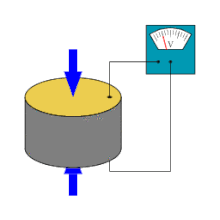Fabric that Converts Sound to Electricity
Piezoelectric materials were used to produce threads that can detect sounds in the environment and transform them into electrical energy.
In response to the bending and twisting of piezoelectric threads that have been woven into fabrics, electrical impulses are generated. In this way, they are able to perceive the sounds in their environment.
Materials that get electrically charged when subjected to pressure are referred to as piezoelectric materials. The sense of sound is one of the uses for these materials, which are used in a wide range of technologies and have a number of different applications. Piezoelectric materials become electrically charged as a result of the action of sound waves.
Researchers reportedly claimed to have constructed threads that use piezoelectric material to convert disturbances into electrical impulses, according to a report published in the journal Science. Through the use of piezoelectric threads, fabrics can be turned into microphones.
These fabrics can detect a variety of sounds, including human speech, bird tweeting, and rustling leaves. It is even possible to detect heartbeats through the use of clothing made of these fabrics. According to testing, fabrics retain their sound-detection properties even after being washed ten times.

ImagePiezo-electric sensor
Researchers claim that the eardrums, which convert sound waves into electrical signals and transmit them to the brain, served as inspiration for them when they developed the piezoelectric filaments in the first place. Future fabric microphones, it is anticipated, will have the ability to assist deaf individuals in hearing and communicating. These materials can also be used to keep track of one's physical activities.
Reference:
